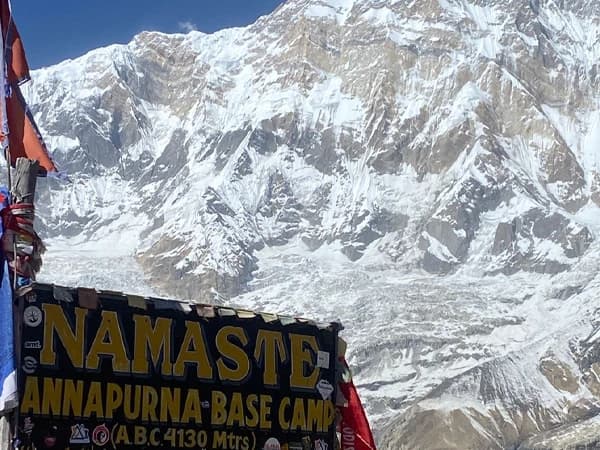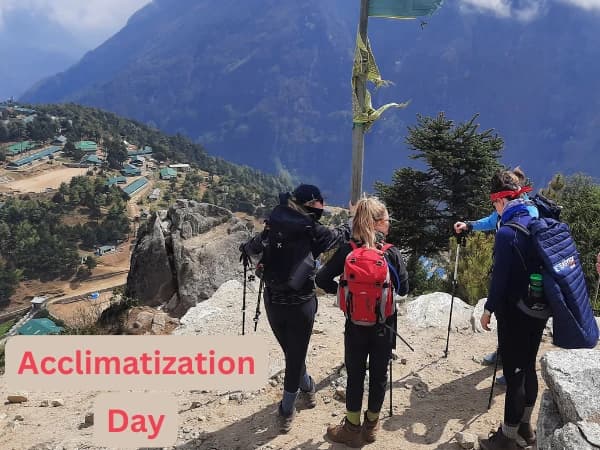Sherpas: The Backbone of Himalayan Adventure Guided Treks
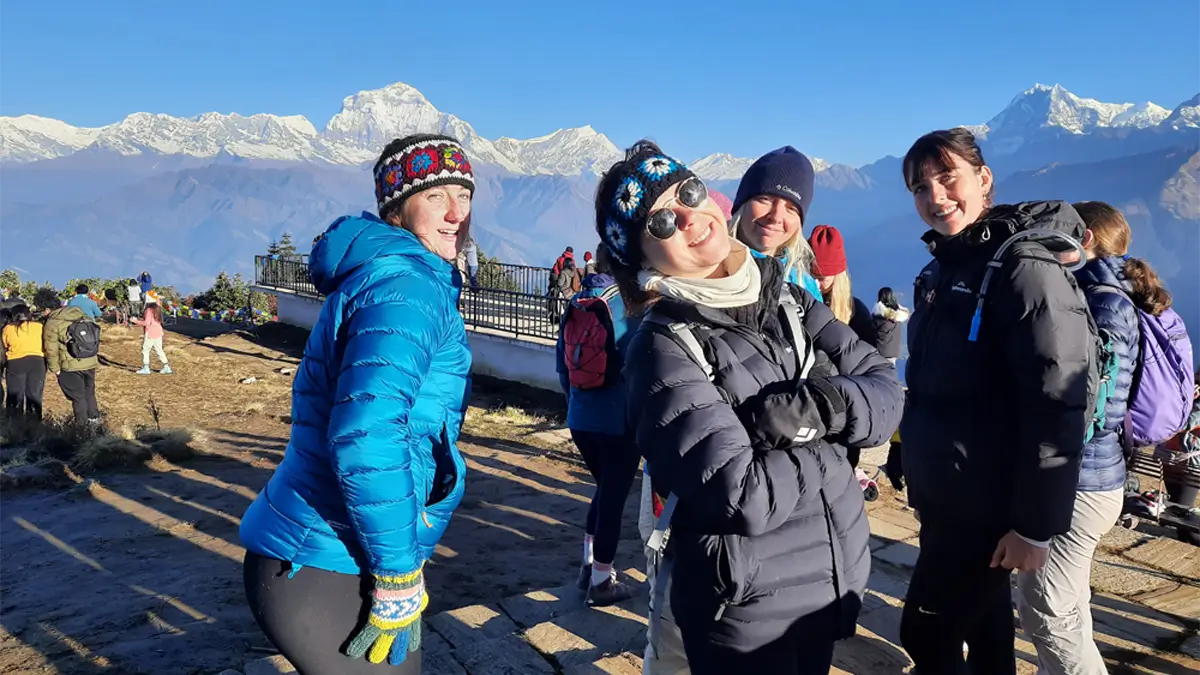
Sherpa guided trekking in Nepal thrives solely because of one reason: Sherpas. Today. Sherpa guides are leaders, navigators, cultural bridges and mountain lifelines.
Every possible path, every rope fixed across in icy crevasses, every tea house that opens doors, Sherpa have made it possible.
On the iconic Annapurna Circuit Trek, where the snow-capped towering peaks pierce through turquoise skies and ancient villages cling to the cliffs, the presence of Sherpa turns every step into a story-navigating wild ridgelines and whispering history beneath each breath of mountain wind.
When you walk the legendary trail of the EBC - Everest Base Camp Trek, it’s the Sherpa’s calm and confidence, forged through generations of guiding on the world’s highest peaks, that makes every breath in thin air feel safer, deeper and more meaningful.
Deep within the sacred sanctuary of Annapurna Base Camp Trek, surrounded by a frozen amphitheater of glacial giants, the Sherpa spirit radiates calm and courage- turning snow into poetry, silence into strength.
These journeys are not just adventures, they are transformations. And once you feel the magic of trekking these trails with a Sherpa by your side, you won’t just want to go, you’ll need to. You’ll recommend it, relive it and relove it, again and again.
Sherpas, the mountain heroes are deeply connected to the terrain, knowing when the clouds whisper of storms, where the yak curve safest or which ridgelines offers the best sunrise views and views of snow-draped mountains.
From the moment you land Lukla or the gates of the Annapurna region, you’re stepping into lands that sherpas have not only walked for generations but nurtured. Sherpa plays as essential role in every Everest and other expedition.
The History of Sherpas: Born and Raised in the Shadow of Giants
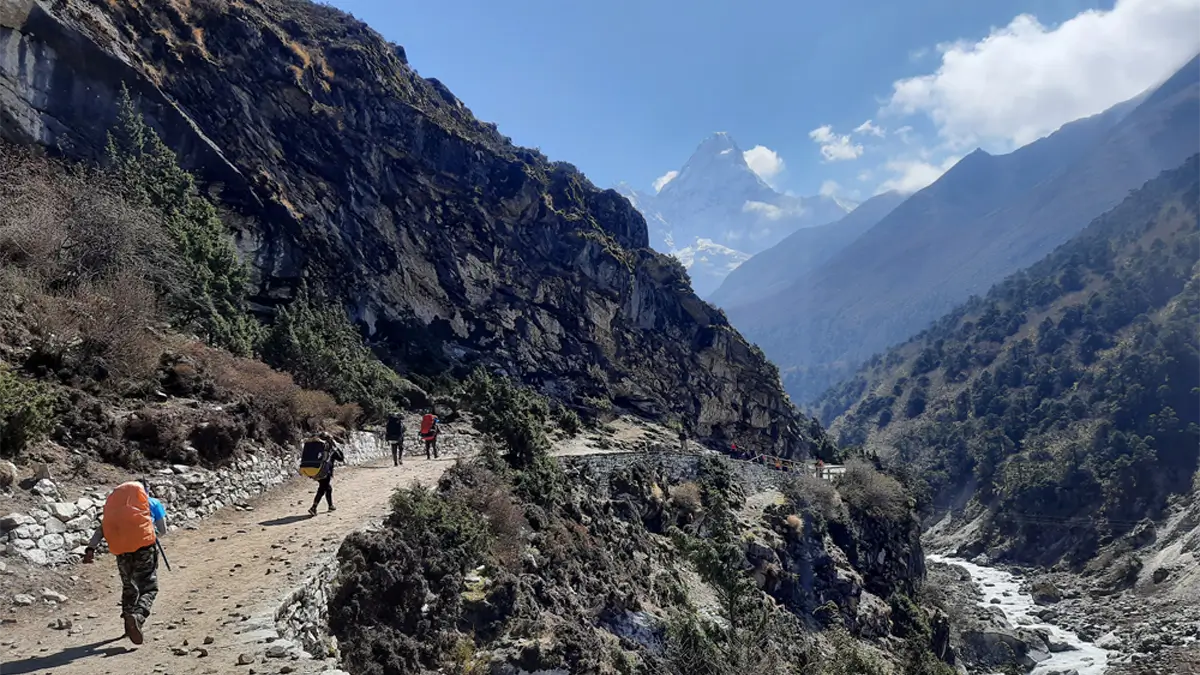
The Sherpas are indigenous ethnic groups originally from the eastern Himalayas, most famously settled in Khumbu, Solukhumbu and Rolwalling regions of Nepal.
Living at high altitudes for generations, they have developed exceptional physical adaptation to altitude, giving them an almost mythic reputation in the world of trekking and mountaineering.
The word Sherpa comes from “Shar-wa” which means eastern people.
Their lungs are tuned for higher altitudes and their heart carries stories of their ancestors who once walked barefoot to base camps and summits without any proper gears.
To walk with Sherpa is to walk beside those who shaped Himalayan history. Sherpa fixed ropes on Everest before the world even knew its name.
They’ve carried climbers to glory and rescued from disaster; they have lost fathers and brothers to avalanches but still return to guide others with grace.
In the earlier days of Himalayan exploration, sherpas carried risks with loads of Western Climbers without protection and proper gear.
They paved the path to Everest’s summit without the help of GPS, oxygen or commercial expedition.
And yet, they walked humbly in the background, letting the summiteers celebrate and take credit while they carried the burden.
Guided Tour and Treks in Nepal by Sherpa Guides and Porters
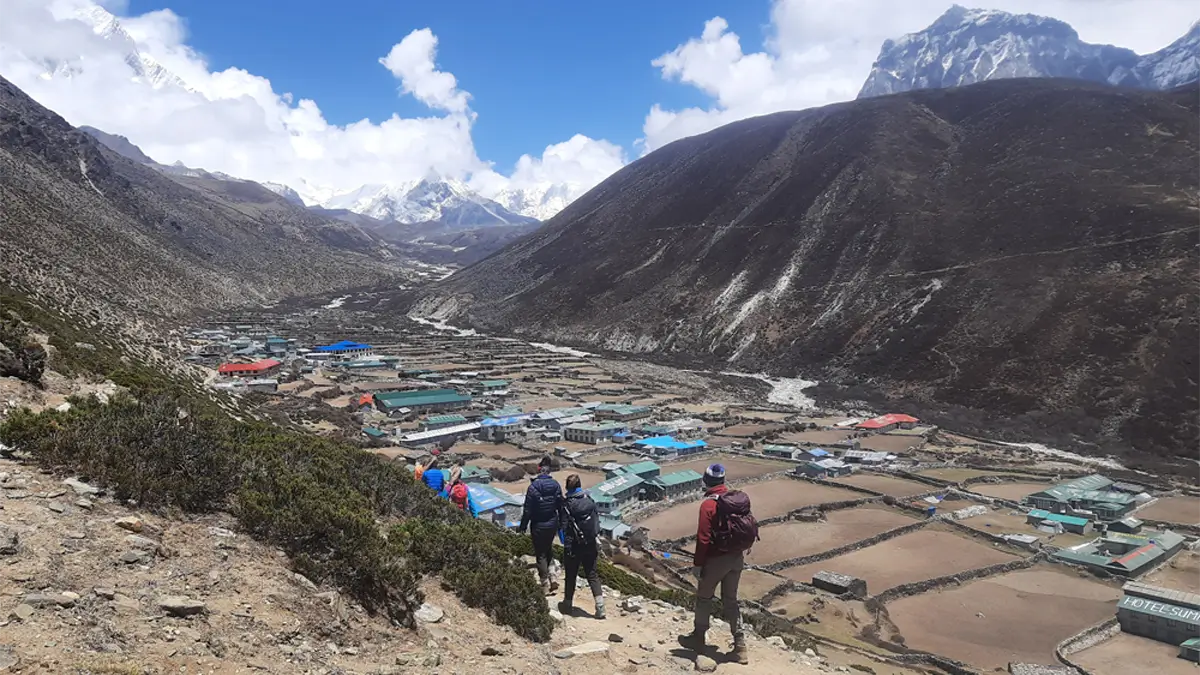
Guided tours and treks with Sherpa guide and porter means entrusting your journey to the true heroes of the Himalayas.
Local Sherpa guides and porter, whose strength, spirit and hereditary wisdom have charted every trail, carried every load and saved innumerable lives in the mountains. These men are the unsung heroes of Himalayan Trekking
They are not just respected for their expertise in high-altitude terrain, but also for their affiliation with the land and its people.
Local trekking and tour operators will make sure that Sherpa guide is licensed by government, has long experience with high altitude trek, is trained first aid and safety.
The expertise of Sherpa guides and porters are what make difficult treks such as things like Everest Base Camp, Everest three pass trek, Annapurna ciucuit trek feels achievable and meaningful.
Sherpa Guides vs Sherpa Porters in Nepal
While Sherpa guides and Sherpa porters often work side by side and come from same resilient mountain communities, their responsibilities on the trail are unique and different.
Sherpa Guides
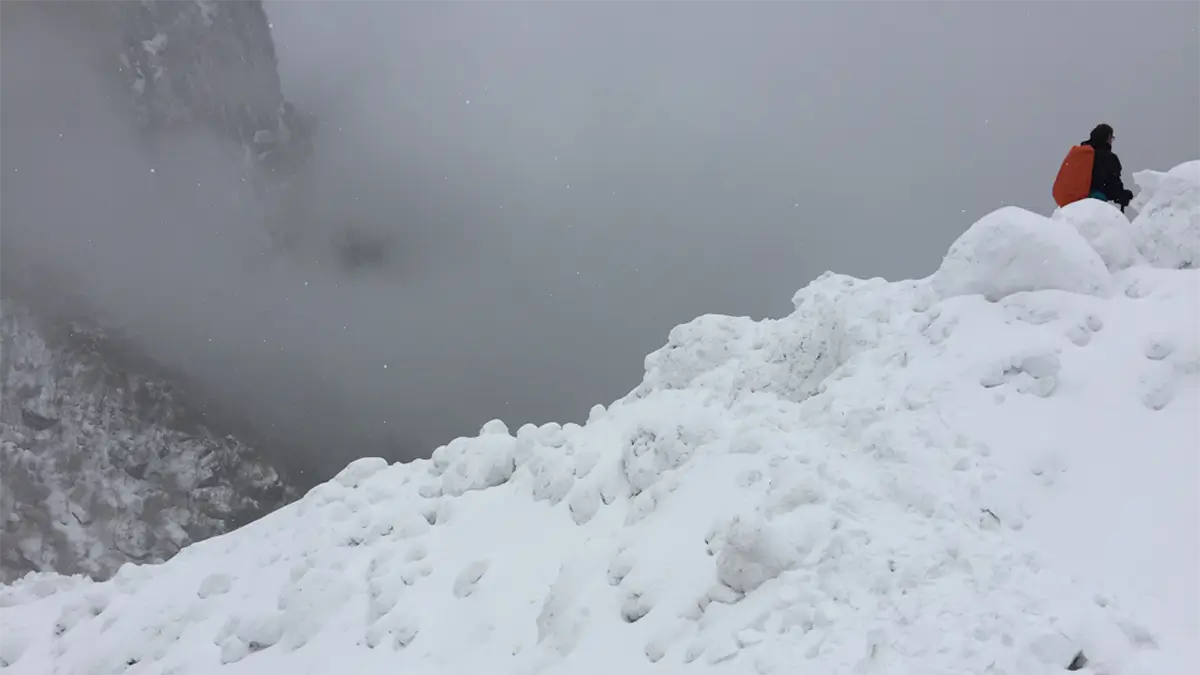
Sherpa Guides are highly trained, experienced professionals who lead the entire trekking journey. Their role goes far beyond simply showing the way. They are responsible for:
- Navigation and route planning: Selecting the safest and most scenic trails for walking, adjusting in case the weather changes, or the terrain is different.
- Altitude professionals: Sherpa guides are taught to recognize the early signs of Acute Mountain sickness and to take action. They are often equipped with medical kits and organize emergency evacuation if necessary.
- Cultural Exposure: Sharing local culture, tradition and stories of Himalayas will surely enhance your trekking experience. Learn local culture, tradition, prayer chants and festivals with local sherpa guide.
- Language and communication bridge: Help create rapport and strong relationship between trekkers and local communities or teahouse owners.
- Emergency response: Providing first aid, incase emergenc trekking company arranging helicopter rescues, or handling unexpected obstacles with calm and confidence.
- Leadership and motivation: When the going gets tough (freezing nights, legs like jelly), hese guides somehow keep everyone’s spirits from face-planting. Whether it’s a pep talk or just sharing a laugh, they’ve got your back.
- Entertainer and moral boosters: On long, cold trekking days, a sherpa guide becomes your source of joy. They sing traditional Sherpa songs, teach you local dances transforming hardship into laughter.
Working as a Sherpa Porter
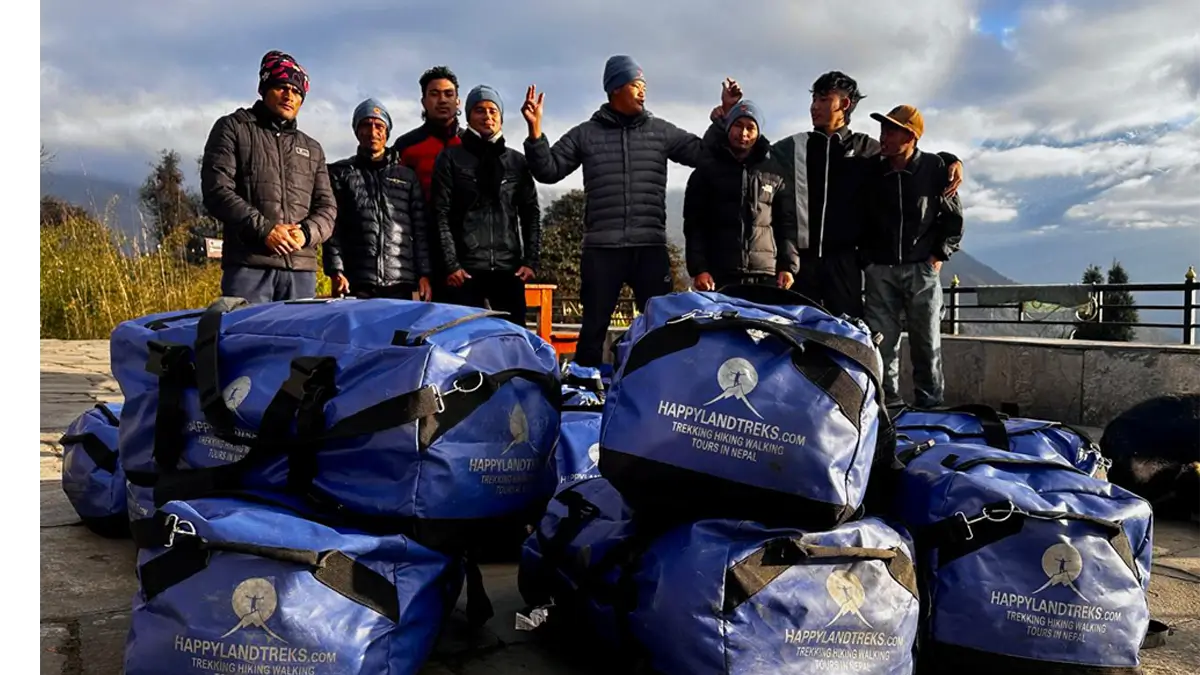
Sherpa porters are the silent backbone of Himalayan trekking. Their main job is to carry the gear, bags and supplies for trekkers or even entire expeditions.
They carry heavy loads through rugged terrain, which allows the trekkers to focus on beauty and challenges of the trail without exhaustion. But their work is far more than physical labor.
- Load bearers: Carrying loads up to 20-30 kg, often on steep, icy or rocky trails for hours every day.
- Pace settlers: Ensuring timely delivery of gear to the next teahouse or campsite before trekkers arrive.
- Helpers: Supporting logistics during camping treks by transporting tents, cooking equipment and food supplies.
- Camp builders: Helping set up camps or arranging sleeping arrangements when needed.
- Emergency coordinators: Assisting in emergencies, sometimes even acting as rescue support if trekkers are injured or fall ill.
- Aspiring guides: Most sherpa porters are young people working toward becoming guides. and some of them are old too.
- Surprise! They’re entertainers too: After a long trek, you’re huddled around a teahouse fire, and suddenly the porters and guides break out into song, dance, and full-on Sherpa jam sessions. Who knew trailblazers could moonlight as party starters?
Sure, Sherpa guides get all the spotlight, but honestly, the porters are the unsung heroes doing the heavy lifting. Both teams are absolute legends.
Without the guide’s wisdom and decision making, your safety is at risk. Without the porter’s physical strength and dedication, your journey becomes logistically impossible.
A Look at the Diverse Faces Behind Nepal’s Trekking Industry Guides
Nepal’s not some one-note tune. It’s a rich Himalayan symphony composed of many voices, cultures and communities. Loads of seasoned guides aren’t all Sherpa.
Every certified trekking guides have authority to take you trekking in the Himalaya. You’ve got Gurungs, Tamangs, Newars, Brahmins, Chettris, Rais, Magars, lama all with mad skills, deep-rooted mountain wisdom, and stories for days.
From the artistic heritages of Newars to the resident hill communities of Rais, Magars, Brahmins and Chhetris, every group brings a distinct tradition and spirit to the Himalayan trails.
Every certified trekking guides in Nepal is trained, licensed and fully capable of leading trekkers through Nepal’s most extreme terrains.
Their qualifications are not defined by heritage, but by experience, knowledge of terrain, mountain safety, weather patterns, rescue protocols and intuitive connection with nature.
The rich diversity has become one of the greatest strengths of Nepal’s trekking scene and together they form a unity in the altitude.
It’s not about where the guide comes from, it’s about where they’re capable of taking you.
Sherpa Guided Trekking and Tours in the Everest Region

Some of the legendary journeys in the world begins here, in the homeland of Sherpas.
Our sherpa guided treks and tours in the Everest region are led by local experts from the Khumbu valley, Everest region, deeply familier with every turn of the trail and every whisper of the wind.
From the moment your flight lands in Lukla, you’re stepping into a world shaped by glaciers, hanging bridges with panorama of snow-capped giants.
For those short on time but eager to witness grandeur views of the Himalayas, The Everest View Trek is the best option. The trail weaves through traditional mountain villages like Phakding, Namche Bazaar and Khumjung.
The Everest view treks offers breathtaking panoramic views of world’s tallest mountain Mount Everest, Lhotse, Ama Dablam, THamserku, Kongde Ri, Kusum Kangru, Taboche, Kangtega, Nuptse, Tawache, Peak 38, Khumbila, Mera peak along with visits to traditional sherpa villages and sacred monasteries.
Craving something a little less “tourist conveyor belt” and more “soul reboot”? Hit up the Gokyo Lake Trek. We’re talking neon-blue glacier lakes, untouched paths, and views that’ll slap your Instagram into next week.
Trek through the unspoiled Gokyo valley, skirt along the massive Ngozumpa Glacier, hop from one glassy lake to the next, and boom, panoramas of Everest, Lhotse, Makalu, Cho Oyu, Gyachung Kang, Taboche, Cholatse, Kangtega, Thamserku, Nuptse and a bunch of other peaks that’ll make you rethink what “epic” means.
If you want to step your foot in the base of world’s highest mountain following the world’s most iconic trail, Everest Base Camp Trek takes you through the legendary Khumbu Valley.
The geographical change is insane glacial rivers snake through deep valleys, alpine terrain. surreal landscapes with scree slopes, glacier moraines and Kharkas.
We can witness jaw droping views of snow-capped mountains like Mount Everest, Makalu, Khumbutse, Lingtren, Pumori, Lhotse, Nuptse, Changtse, Khumbutse, Pumori, Makalu, Island Peak, Ama Dablam, Baruntse, Cholatse, Taboche, Kangtega and many more in Everest Base Camp trek.
IF you are planning for advance treks and more adventure to truly explore the Everest region, Everest Three High Pass is your ultimate Everest circuit. This adventurous trek crosses Renjo La, Cho La and Kongma La, offering unmatched mountain scenery and raw wilderness.
Along the way you’ll explore all Gokyo Lake, Everest Base Camp, Everest View trek with panoramic views of snow-capped mountains.
You can witness jaw-dropping views of giants like Mount Everest, Lhotse, Makalu, Cho-Oyu, Ama Davblam, Nuptse, BAruntse, Pumori, Thamserku, Taboche, Island Peak, Lobuche east and many more in Everest Three Pass trek.
You can also visit sacred Khumjung Monastery, where you can see Yeti Skull preserved for more than 300 years with your own bare eyes, which falls on Everest region.
Annapurna Region Guided Trekking and Tours
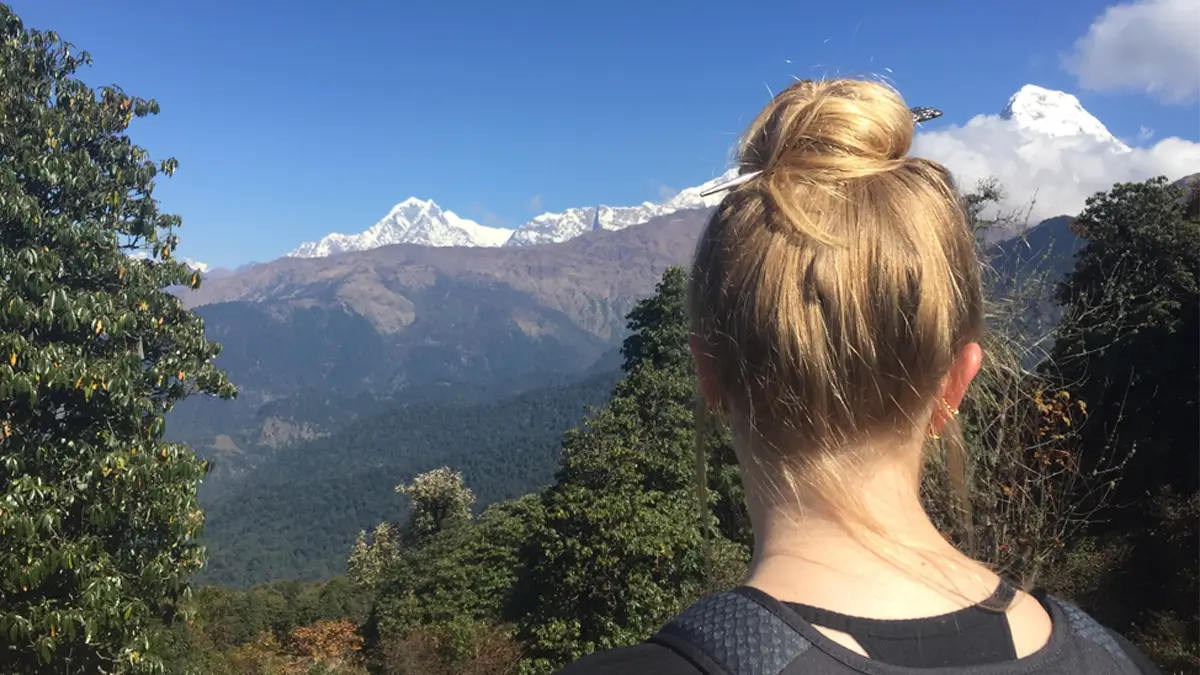
In the heart of central Nepal, the Annapurna Region welcomes trekkers with diverse landscapes, vibrant ethnic cultures and towering peaks, all best explored through our Sherpa guided treks and tours in Annapurna region.
The Poon Hill with Hot Spring Trek takes you through rhododendron forests, stone, stairs, sunrise and sunset, with natural hot spring next to the modi khola 20 - 30 minutes downhill from the jhinu Danda. all under expert care of a local guide.
The Annapurna base camp You can witness panoramic views of snow capped giants Annapurna I, Hiunchuli, Annapurna South, Machhapuchhre, Gangapurna, Annapurna III, Tent Peak, Singu Chuli in Annapurna Base Camp trek.
This trek is perfect mix of culture, comfort and high altitude adventures.
For those drawn to remote beauty, the Tilicho Lake Trek leads to one of the world’s highest and most mystical alpine lakes, offering awe inspiring desert like scenery and spiritual soltitude. Views of snow draped peaks like Tilicho Peak, Annapurna II, Annapurna III, Gangapurna, Nilgiri, KHangsar Kang, Chulu in TIlicho Lake.
Meanmwhile, the legendary Annapurna Circuit Treks, one of the greatest treks on Earth, loops you through subtropical valleys, wind-swept plateaus, and over the challenging Thorang La Pass, all while staying close to the traditions and insight of your sherpa companion.
You’ll pass through high altitude, Thorang La pass, and visit sacred Muktinath Temple
You will get to witness zoomed in view of snow draped giants laike Annapurna I, Annapurna II, Annapurna III, Annapurna IV, Gangapurna, Tilicho Peak, Dhaulagiri, Nilgiri North, Central and South, Tukuche Peak, Pisang Peak, Chulu East and West, all in Annapurna circuit trek.
Or, for a proper off-the-grid vibe, check out the Mardi Himal Trek. It’s all mossy forests, peaceful ridgelines, high viewpoints with close-ups of Machhapuchhre, Annapurna South, HIunchuli, Annapurna I, Annapurna III, Gangapurna, Tent Peak—just a whole brigade of Himalayan showstoppers.
On the flip side, if you want big culture with your mountain fix, the Ghorepani Poon Hill trek is where it’s at. Cozy up in Gurung and Magar villages, dive into local life, and brace yourself for a sunrise at Poon Hill that’ll ruin all other sunrises for you.
Golden light pouring over Annapurna, Dhaulagiri, Nilgiri, witness this kind of view that makes you forget your toes are frozen from Poon Hill.
Nepal Sherpa Guided Langtang Region Trekking
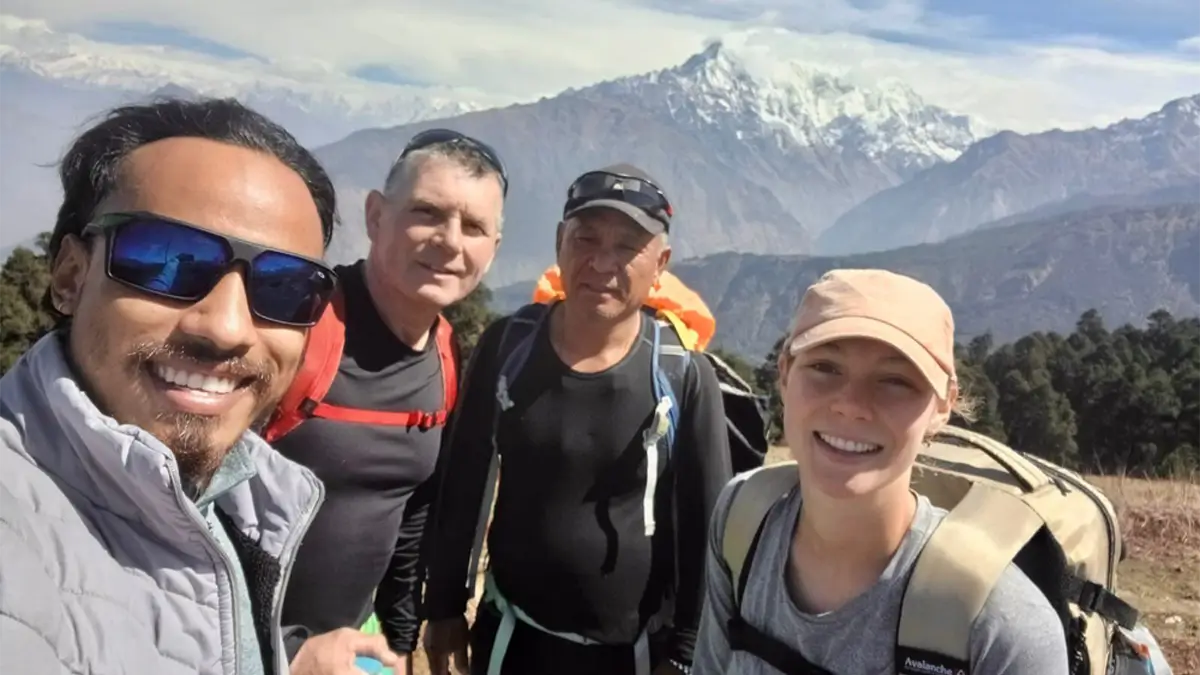
Sherpa guided Langtang region trekking offers a truly soulful Himalayan experience, where alpine beauty meets ancient Tibetan culture within 7-8 hours from Kathmandu.
With expert Sherpas who’ve known these trails for generations, this experience connects you directly in the heart of Himalayas of Langtang region.
Valley of glaciers, Langtang valley trek is one of the most iconic trails for Sherpa guided Langtang region trekking rising dramatically from lush green valleys at 1,40 meters to glacial highlands above 4984 meters.
Starting from Syabrubesi, you will pass through blooming rhododendron forests, ancient Tamang villages up to Kyanjin Gompa, a Himalayan Spiritual Hotspot.
From Kyanjin Gompa, you can hike to Kyanjin Ri or Tsergo Ri, where you can get panoramic 360 views of snow-draped giants like Langtang Lirung (7,227m), Gangchempo (6,388m), Dorje Lakpa (6,966m), Langsisha Ri (6,427m), Yala Peak (5,520 m), Morimoto Peak (6,150 m), Naya Kanga (5,844m), Sishapangma (8,027m) (Tibet) and many more.
Another gem of Sherpa guided Langtang region trekking is the Gosaikunda lake trek, a sacred and spiritual journey to shimmering alpine lakes nestled at 4,380 meters.
Starting from Dhunche and ascending to 4,380m, the trail winds through lush rhododendron forests, quiet monasteries, traditional Tamang villages, yak pastures and rugged ridgelines with panorama of snow draped mountains.
As you approach the sacred Gosaikunda lake, believed to be created by Lord Shiva himself, the landscapes shifts from river valleys into rocky and high alpine sanctuary.
Surrounded by craggy peaks, the emarld blue lake sits silently in a natural bowl.
You’ll be rewarded with panorama of Langtang Lirung (7,227m), Ganesh Himal (7,422m), Manaslu (8,163m), Himalchuli (7,893m), Dorje Lakpa (6,966m), Langsisha Ri (6,427m) even the Annapurna range to the far west in Gosaikunda lake trek.
The Ama Yangri short trek 3 days though lower in elevation and shorter trekking days still holds great value in Sherpa guided Langtang region Trekking.
Starting near Sundarijal and climbing up to Tarkeghyang, this trail introduces trekkers to the rolling mid-hills of Nepal.
This trek features rolling ridges, carved terraced fields, traditional Sherpa and Hyolmo villages adorned with prayer flags and ancient monasteries.
Trekkers can admire captivating 360 views of Shishapangma, Dorje Lakpa, Langtang Lirung, Gangchempo, Gauri Sankhar, Jugal Himal Range, Ganesh Himal from this spiritual viewpoint, all without high-altitude acclimatization.
Manaslu Region Trekking with Local Guides and Porters
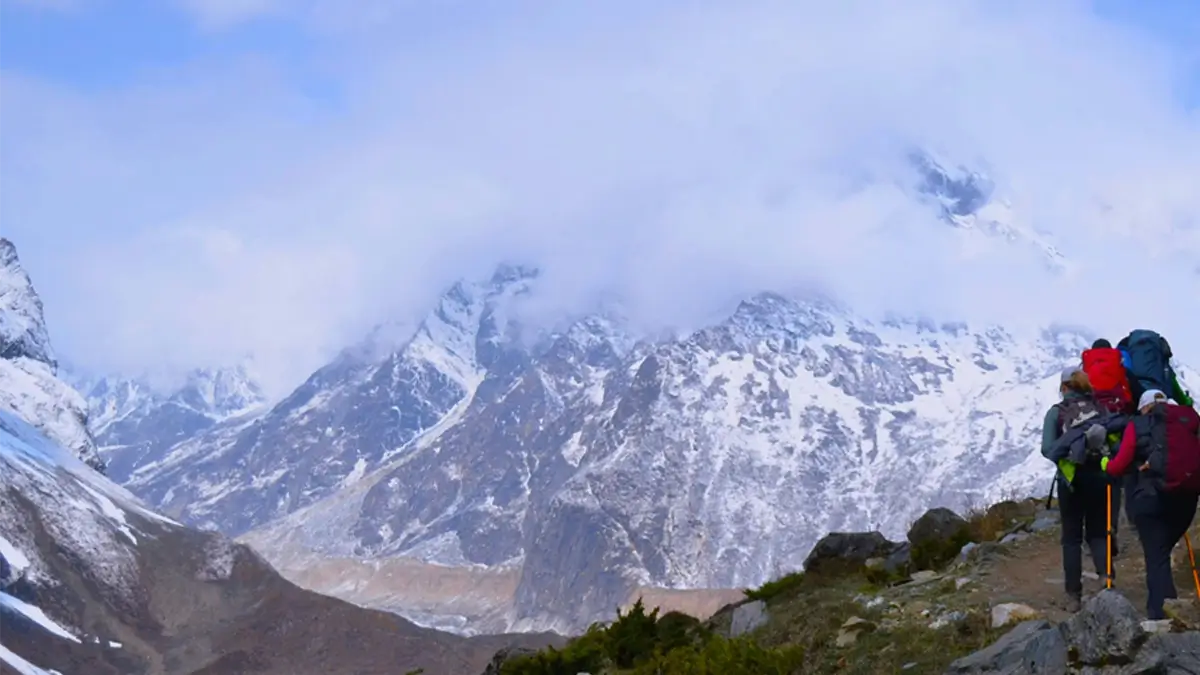
Manaslu region trekking with local guides offers a gateway to one of the most secluded, sacred, and visually staggering trekking experiences in the Himalayas.
Nestled in the shadow of Mount Manaslu (8,163m), the world’s eight highest peak, this region is raw paradise for trekkers seeking off-the-beaten-path exploration.
As this restricted region unfolds beneath your feet, your local guide becomes your bridge to untold cultural wisdom, unfiltered Himalayan wilderness and high-altitude glacier landscapes.
The Manaslu circuit trek is the crown jewel of the region, offering a complete Himalayan journey that encircles Nepal’s eight highest peak, Mount Manaslu (8,163m).
The trail begins in the lower elevations of Macha Khola and gradually ascends through humid river valleys, hillside terraces, sub-tropical forests and ancient mountain villages.
The changing geography from humid lowlands to snow-covered valleys is a defining feature of this trek. After ascending through lush tropical gorges, passing through ancient stone villages like Jagat and Namrung. we’ll reach high-altitude alpine zones near Sama Gaun (3,530m).
The Manaslu circuit trek, the most iconic in the region is known for incredible alpine views, remote trails, high mountain passs, Buddhists monasteries like the one in Lho.
One of the most iconic highlights is the crossing of Larkya La Pass (5,160m), featuring Manaslu (8,163m), Cheo Himal (6,820m), Himlung Himal (7,126m), Kang Guru (6,981m) , Annapurna II(7,937m), Ribung Himal, Naike peak (6,211m), Manaslu North (7,157m) and many more.
Meanwhile, the Manaslu base camp trek is a side excursion from Sama Gaun, perfect for trekkers to get close to the sheer power and presence of Manaslu itself.
The route climbs to 4800m, weaving through glacial moraines, icy ridgelines and pristine alpine terrain. This trek offers one of the best close-up experiences with an 8000-meter peak in all of Nepal.
Along the way trekkers are rewarded with jaw dropping views of Manaslu (8,163m), Naike peak (6,211m), Ribung Himal, Manaslu North (6 994m), Baudha Himal (6,672m), Shringi Himal (7,187m), Ngadi Chuli (7,871m) and hanging glaciers that cascade down the eastern face of the mountain.
The Tsum Valley trek takes you into hidden spiritual valley, oncle closed to outsiders, where Tibetan Buddhism thrives untouched by modern influence. The Tsum valley was restricted and not open to outside trekkers until 2008.
Beginning from Philim and ascending gradually through Chumling, Chhokangparo, Rachen Gompa and all the way to Mu Gompa (3,700m), this trek takes us across breathtaking scenes up to Tibet border.
The Tsum Valley trek is a spiritual and cultural journey through landscapes carved by centuries of devotion, where we’ll pass through the cave that ancient yogi Milarepa meditated hundreds of years ago.
The terrain shifts from deep pine forests to open highland plateaus, Kharkas, giving trekkers incredible vistas of snow-draped mountains. We can discover the valley’s hidden sacred monasteries like Rachen Gompa and Mu Gompa which is the valley’s spiritual hotspot.
We can witness jaw dropping panorama of Ganesh Himal (7,422m), Sringi Himal (7,187m), Baudha Himal (6,672m), HImalchuli (7,893m), Shyal Peaks and many more in Tsum valley trekking.
Rupina La pass trek is perfect if you are seeking an adventurous trek with true wilderness that dive deep into remote terrain and emerges at the foot of the Himalayan giants.
Starting from Barpark or Gorkha, the trail winds through untouched villages, wild forested ridges and isolated meadows before reaching the high pass of Rupina La (4,720m). This trail is physically demanding and far less travelled, but its remoteness adds unmatched serenity and raw beauty.
From Rupina La High Camp, you are greeted with a sweeping 180 degree panorama of iconic and lesser known Himalayan giants. Closer to the camp, you’ll find unnamed sub-Himalayan peaks, serrated edge of Dwijen Himal, forming dramatic alpine stage above rocky moraines.
Snow draped mountains like Himalchuli (7,893m),Baudha Himal (6,672m), Ganesh Himal (7,422m), Shringi Himal (7,187m), Manaslu (8,163m), Kutang Himal, Dwijen Himal dominates the landscapes in Rupina La pass trek.
Note: You can customize your itinerary according to your fitness, interests and travel schedule.
Benefits of Certified Guided Treks and Sherpa
- Unlimited local knowledge: Sherpas know the mountains, the paths, hidden spots, the culture and local people like no one.
- Cultural richness: You’ll visit sacred monasteries, hear local myths and eat traditional food, all explained and guided by Sherpa.
- Physical and emotional safety: Altitude can hit hard, and conditions can change quickly. Sherpa guides are trained in high-altitude first aid to care for their team.
- Spiritual Depth: Sherpa people is deeply rooted in Tibetan Buddhism and their relationship with the mountain is phenomenal, spiritual, offering trekkers a perspective that goes beyond the physical challenge.
- Support the local community: Hiring local Sherpa sustains remote mountain communities.
Difficulties and Challenges of Guides and the Sherpas
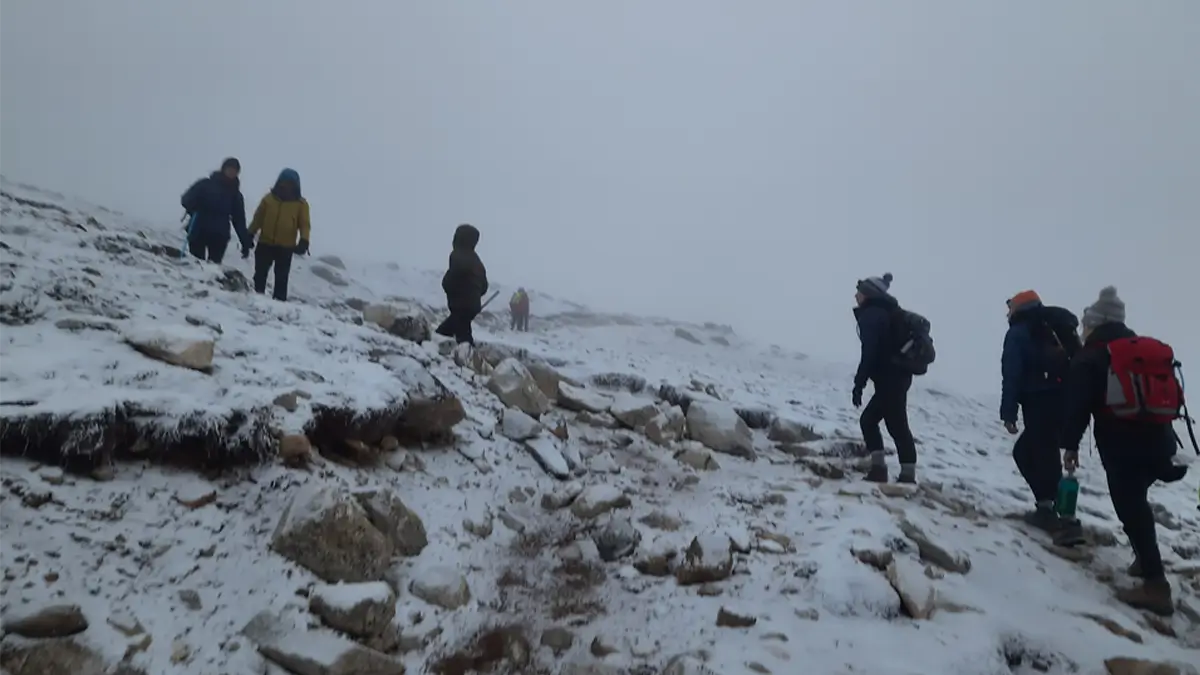
Sherpa guided trekking in Nepal has its roots in a brutal era. Behind the peaceful façade of mountain hospitality lies a dark history of survival and unspoken hardships.
Decades ago, Sherpas climbed icy ridges with jute ropes and carried trekkerss heavy loads without proper gear, insurance or recognition.
Many Sherpa guides perished in avalanches, frostbite due to lack of proper gear, clothing and equipment. Many families lost their members, yet they smile and continue guiding on mountains and expedition.
The story of Sherpa guided trekking in Nepal is also a story of hardship and silent bravery. Long before gear companies and synthetic jackets existed, sherpas walked these deadly trails barefoot or in torn leather thongs.
Sherpas clear the paths, establish camps and test routes, often with bloodied feet, guiding early mountaineers, yet they smile and guide happily.
They didn’t use oxygen or GPS, they only had courage, grit, a never-give-up attitude and deep respect for the mountains.
Sherpa, the mountain heroes, would fix ropes on sheer vertical ice walls risking avalanches, icefall, high altitude storms with handmade harnesses and no proper gear.
They’d carry over 20-40 kg on their backs balancing on icy ridges, guiding foreign climbers with no proper gear, equipment with sandal on their feet.
They climbed into death zone with no gloves, just makeshift mittens sewn from jute sacks. Many Sherpa people lost their family, many Sherpa guides died on these treks and expedition before because of lack of proper gears and equipment.
Sherpa guided trekking in Nepal is built on these sacrifices. It is the legacy of countless lives lost, sons, brothers, fathers, who died in crevasses or under rockfall, so that trekkers and visitors could safely experience the Himalayas.
Sherpa Hospitality: Guided Trekking Accommodation in the Himalaya
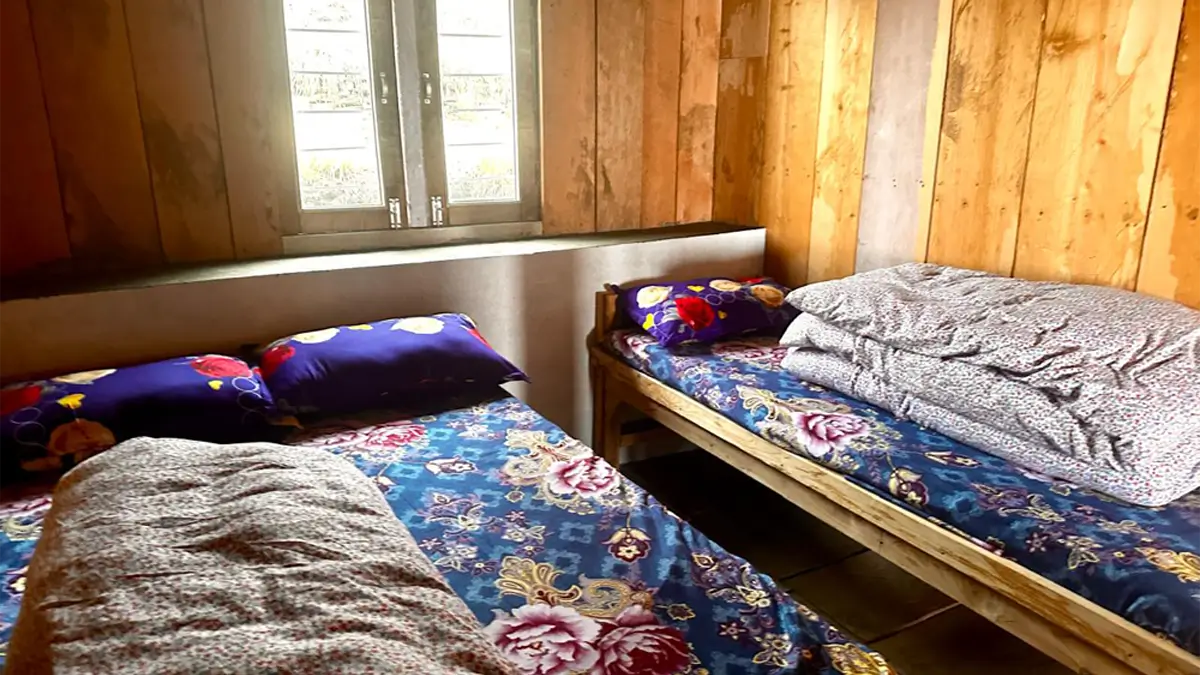
Sherpa guided trekking in Nepal introduces trekkers to an ancient tradition of welcoming strangers, trekkers as family. Sherpa people treat trekkers and other people as their own family.
We can get a chance to learn about sherpa’s authentic culture, hospitality, participate in traditional activities.
Sherpa people welcomes you with open arms, a warm smile, butter tea, dried yak cheese or Tsampa from family’s kitchen. That’s the sherpa hospitality, giving without measuring, serving without expecting.
The lodges you sleep in today, those sturdy teahouses with wooden beds and warm fire, stands where just few generations ago, Sherpas slept on icy floors under yak-hair tents or makeshift stone shelters.
Locally Owned Guided Trekking Operator with Guides and Sherpa
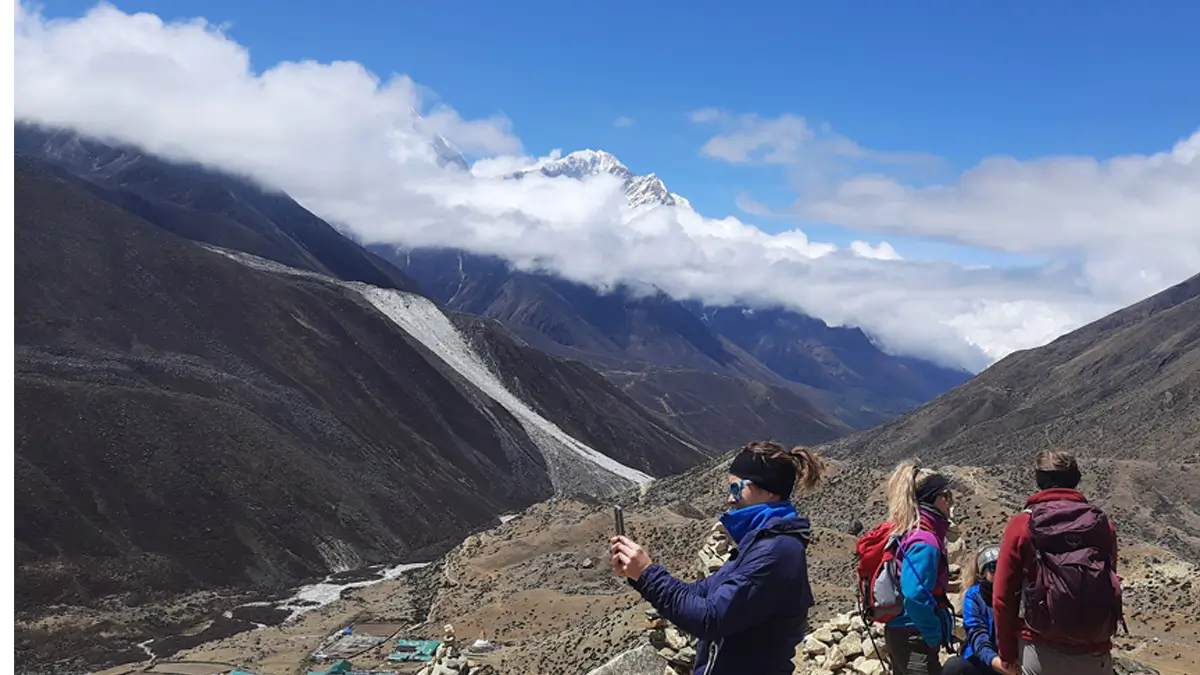
Locally owned guided trekking operator with Sherpa guide offers more than a trekking service, it’s the key to having an authentic, responsible, and soul-stirring Himalayan experience.
Locally owned trekking and tour operator are run by local teams who live and breathe the very mountains they guide you though.
A locally owned guided trekking operator with guides ensures your travel is rooted in purpose: supporting local families, empowering mountain communities, preserving Himalayan culture, offering you authentic adventure.
When your trek is organized by those who were born in the very Himalayan villages, each steps becomes a connection.
Most importantly, it ensures that guides and porters are paid fairly and treated with dignity and respect.
Locally owned guided trekking operator, with their guides ensuring their team is licensed, trained in first aid, and experienced in handling high-altitude emergencies.
locally owned trekking and tour operator prioritize your safety above all else, as safety is another vital aspect.
Local trekking and tour operator with sherpa guides offers not just professional but heartfelt guidance, so you can fully immerse in soulful Himalayan experience without worry.
Choosing local trekking operator with sherpa guides means honoring the people who protected and shared these trails long before trekking became an industry.
It means choosing care over convenience, authencity over commercialism and impact over indulgence.
Sherpa Trekking Store in Nepal
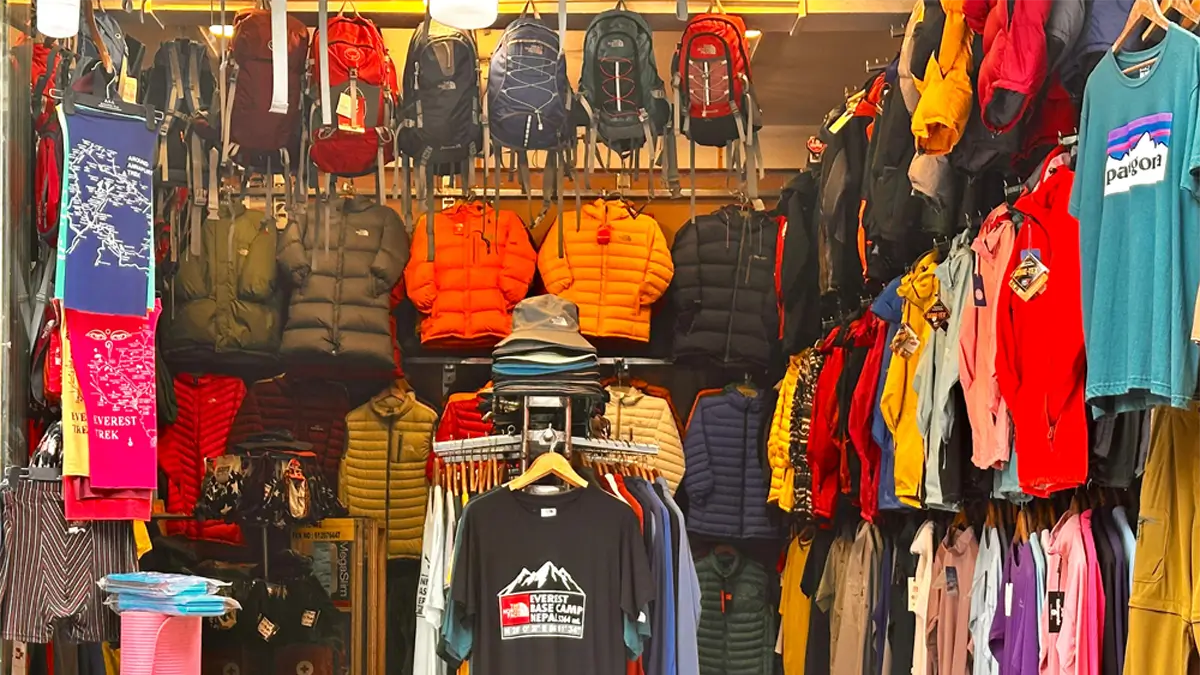
Sherpa Trekking stores in Nepal are gear shops owned and runed by Sherpas people, majority of whom are active or retired guides and climbers. They are stocked with reliable gears, offered at fair prices and guided upon real Himalayan experience.
Many of these stores are based in Thamel (Kathmandu), Lakeside (Pokhara) and key trailheads like Lukla, Namche Bazaar and Manang.
From down jackets to sleeping bags, trekking poles, tent, thermal layers, gloves, even altitude medicine kits and many more. However, it is better to prepare everything in Kathmandu, which is more convenient for you.
The owner of Sherpa trekking stores know exactly what works above 5000 meters, because they use it there. Unlike flashy shops, sherpa trekking store In Nepal focus on what works and not what sells.
If you are purchasing at Sherpa trekking store in Nepal, it directly supports Sherpa families, guides and local entrepreneurs. Sherpa trekking stores in Nepal also provide rental trekking gears services, letting you travel light.
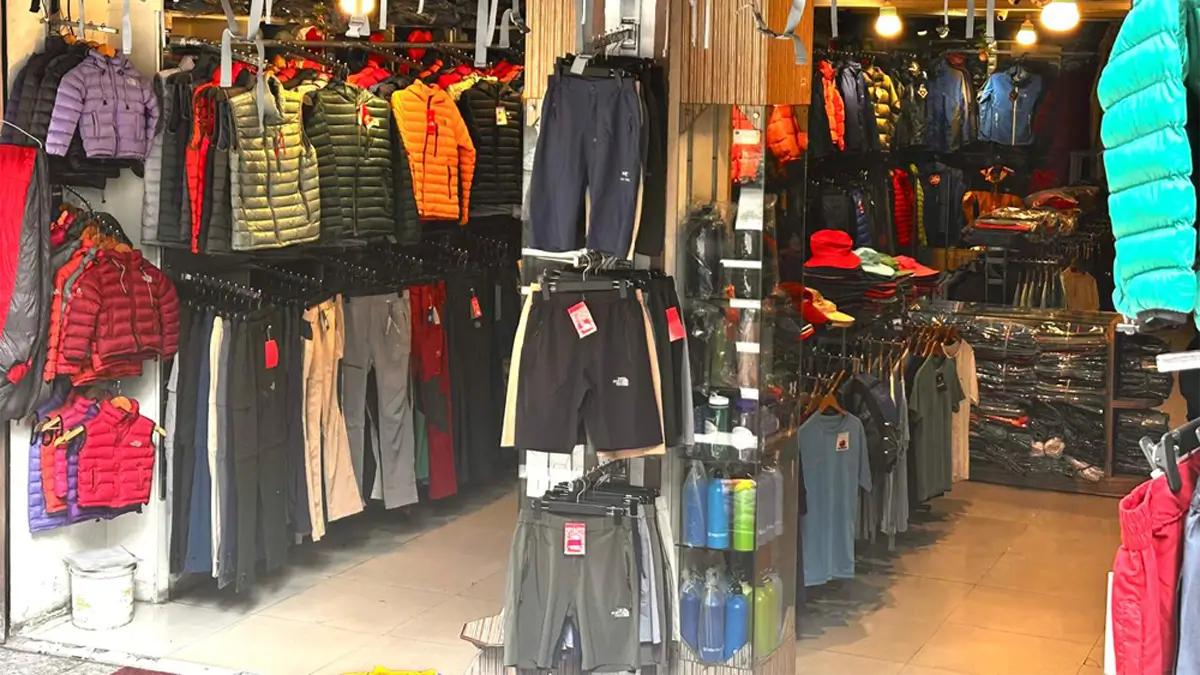
Note: If you want suggestions on price, which gears and equipment to buy, you can also contact your trekking and tour operator.
FAQs: Sherpa Guided Trekking in Nepal
1) Does Sherpa Guides Only Summit Everest?
No, Every certificied guide summited Everest as well as other high mountian peak.
2) Where Did Sherpa People Come From?
Sherpa people originated from eastern Tibet and migrated to Nepal’s Everest region over 500 years ago across high Himalayan passes.
3) Is Sherpa First People to Climb Mount Everest?
Sherpa Tenzing Norgay, along with Sir Edmund Hillary, were the first climbers to reach the summit of Mount Everest on May 29, 1953.
4) Who is the first Sherpa Guide that Climbed Mount Everest?
Tenzing Norgay Sherpa is the first sherpa guide that climbed Mount Everest.
5) Are Sherpa-Guided Treks Suitable for Beginners?
Many of the sherpa-guided trek is suitable for beginners but some are advance.
6) Can I Request a Private Sherpa Guide for a Customized Trek?
Yes, you can request private sherpa guide for a customized trek.
7) Can I Trek Solo with a Sherpa Guide?
Absolutely, many solo trekkers prefer one-on-one guided treks for safety and connection.
9) Is Sherpa Guided Trekking in Nepal Safe for Families?
Yes, sherpa including any certificied guides are caring, child friendly and ideal for family trekking adventures.
10) Can Sherpa Guided Trekking in Nepal be Customized?
Yes, you can customize your itinerary according to your fitness, interests and travel schedule.
















